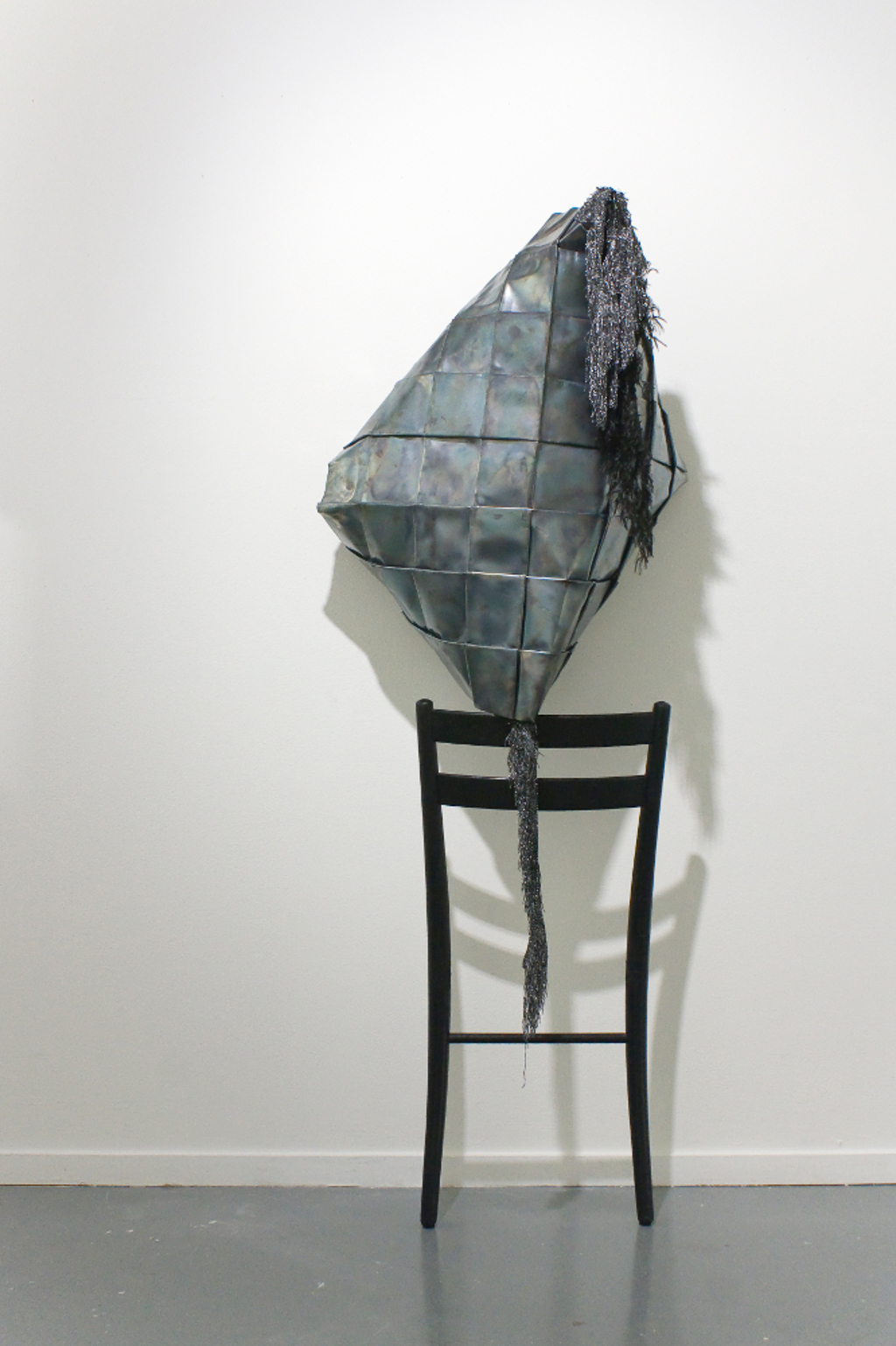Introduction // Background // Theory and Context // Methods // Discussion i. Bodies and Buildings // The Pleating Papers // Discussion ii. Spaces and Voices // Other Stories // Conclusion // References and Image List
Conclusion
In working with narrative in the form of sculpture and the spoken word, and the relationship between these two forms of storytelling, I have found that architecturality might be the key to understanding and getting the best from both, whether separately or combined. In the role the architectural plays in the space between sculptural and spoken narratives, it is architecturality that bridges these two narrative forms so that they may step across their respective thresholds and inhabit one another, at least for a time.
Seeking new understandings of what the making and writing of art might do or be, I have explored in this exposition alternative ways of writing about art without reducing it to just one meaning, taking Bal’s approach to Bourgeois’ Spider as a guide and looking at other artists’ work and the writing surrounding it. Further, this exposition develops my own methods for both writing and making, thereby investigating how experiential forms of narrative relate to material objects; how language and the voice can connect to the physical; and how one might write around or through objects so as to leave gaps for imagination and other stories to unfold.
I still, however, have questions surrounding the relationship between sculpture and the spoken word in artistic practice, and how they might be reconciled. My sculptures are often accompanied by readings and performances. These performances follow various formats, from an entire set of ten texts to just one on the hour, every hour. Sometimes they take place with the sculptures and sometimes in a separate location, so that both sculpture and text might be encountered together or apart depending on the time of the visit. Mostly, however, the sculptures are encountered without the texts. They are left alone with the viewer and allowed to breathe, utter their own stories and whisper different thoughts. My words might therefore breathe a little easier too, and gain a greater sense of distance and gravity away from their sculptural counterparts.
For I am crawling closer to the conclusion that the two sides of my practice — sculptural and spoken word — are intertwined and important to one another during the process of making, but do not necessitate being shown together in the final outcome. One form of storytelling does not necessarily need the other, but they are mutually informative in my work, even if temporally or geographically distant in the moment of encounter. The relationships formed between spoken word and sculpture when performed in the same space are interesting, but in allowing each to be encountered separately, opportunities for independent narratives also arise, or rather remain. Sculpture and spoken word are thus not mutually overpowered, but rather exist in independent expression of various narratives, leave space for interpretation and communicate in their own language. They tell stories, whether in company or alone, and invite the viewer to listen, to come into the fold.
